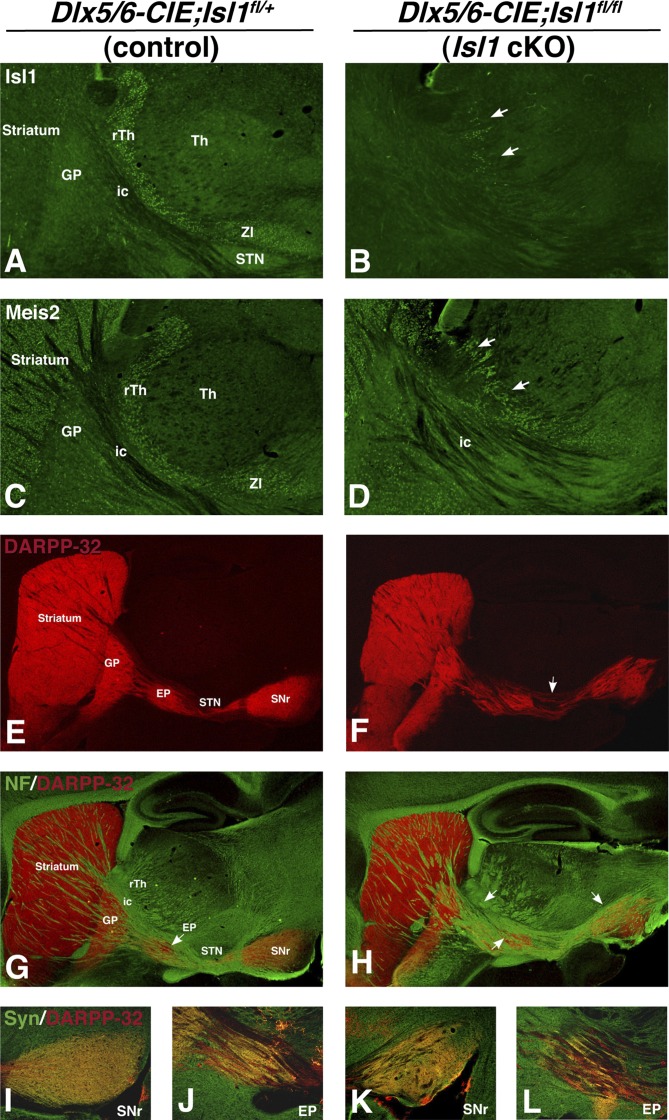Fig. 6.
Ventral forebrain inactivation of Isl1 reduces Isl1 expression in the striatum as well as the reticular thalamus and leads to a disorganization of the striatonigral output pathway. At adult stages the ventral forebrain, inactivation of Isl1 causes a deletion of Isl1 in the striatum as well as a reduction of Isl1 in the reticular thalamus and zona incerta of the diencephalon of conditional mice (B) compared with controls (A). Meis2 immunostaining shows that the structure of the reticular thalamus and zona incerta is altered in Isl1 conditional mice (D) compared with controls (C). DARPP-32 immunostaining in Isl1 conditional mutants reveals a smaller striatal size as well as a disorganization of the striatonigral pathway to the SNr (F) compared with controls (E). Double immunofluorescence with neurofilament (green) and DARPP-32 (red) indicates an alteration in the structures of the internal capsule and the cerebral peduncle in Isl1 conditional mutants (H) compared with controls (G). High-power images of the SNr and EP double-labeled with synapsin-1 (green) and DARPP-32 (red) reveal fewer synapses in these two nuclei of the striatonigral pathway in conditional mutant mice (K and L) compared with controls (I and J). EP, entopeduncular nucleus; GP, globus pallidus; ic, internal capsule; rTh, reticular thalamic nucleus; SNr, substantia nigra pars reticulata; STN, subthalamic nucleus; Th, thalamus; ZI, zona incerta.

